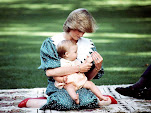I am currently reading a biography on Edie Sedgwick, which in one sense is sort of like inhaling junk food. The biography, first published in 1982 by Jean Stein, includes a world of photos of the Sedgwick family and The Factory and Andy Warhol, and when you're as obsessed with the 1960's as I am, it's like I can't devour it fast enough.
There is one photo of Edie at nineteen, lying on her back on a big white bed, kicking her lovely legs in the air, her head sinking into a pillow and turned at just the right angle toward the camera, her eyes scrunched closed and her smile famously dimpled. The bed knobs are spindly and glorious, like they were made of cherry wood (something like the furniture my grandparents had in their house in California) and the wallpaper a whimsical spiral pattern, like perfect sunbeams bursting all around this gorgeous girl. I looked at the photo and thought, dear gosh, she must have been so happy, and then I noticed the description for the photo and that it happened to be taken during her time in a mental institution.
As I continue to read about Edie's life, told as a sort of wonderfully disjointed oral history by family and friends, I feel like a voyeur sucking the substance out of this big juicy thing, not only the 1960's, but the heartbreaking story of a family who lost a daughter to an overdose at 29, one son to a motorcycle accident at 31, and another son to hanging himself from the bathroom door at 26. I sort of feel like I need to turn my face away from all of this, like I shouldn't be allowed to read something so personal, because it is becoming more and more horrifying. But I find myself reading on, not only for my interest in this creature who danced for Andy Warhol and defied the rules of fashion for the sake of fun during that magical window of time in New York in the 1960's, but because I need to make sure this family is going to be OK, and even though I know they won't be, I feel like maybe things could end differently this time around, if I could only love them hard enough.





